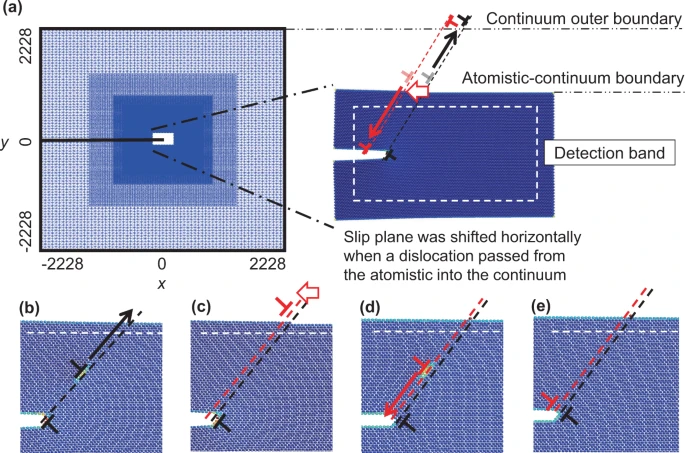Phys.org February 16, 2022
Over the past century a succession of mechanisms has been hypothesized for structural failures resulting from prolonged low-amplitude loading. By atomistic modeling researchers at Cornell University have shown that sustained fatigue crack growth in vacuum requires emitted dislocations to change slip planes prior to their reabsorption into the crack on the opposite side of the loading cycle. By harnessing a new implementation of a concurrent multiscale method, they assess the validity of long-hypothesized material separation mechanisms thought to control near-threshold fatigue crack growth in vacuum and reconcile reports of crack growth in atomistic simulations at loading amplitudes below experimental crack growth thresholds. Their results provide a mechanistic foundation to relate fatigue crack growth tendency to fundamental material properties, e.g., stacking fault energies and elastic moduli, opening the door for improved prognosis and the design of novel fatigue resistance alloys…read more. Open Access TECHNICAL ARTICLE

Illustration of slip plane shifting implementation. Credit: Nature Communications volume 13, Article number: 812 (2022)